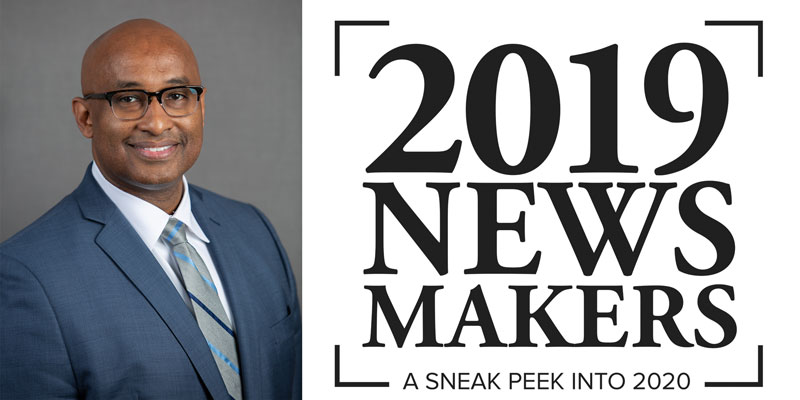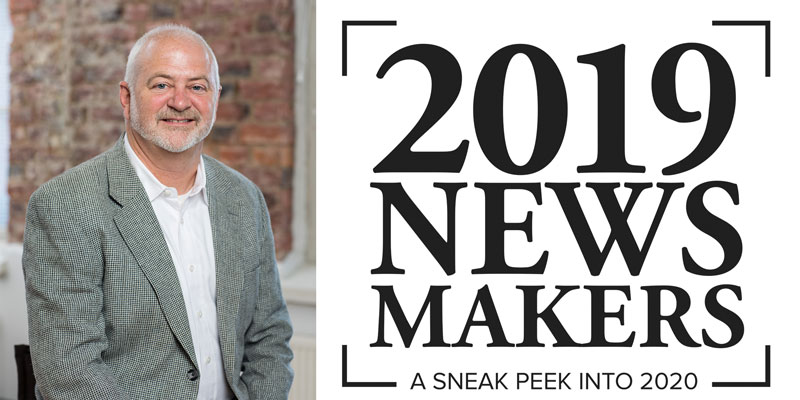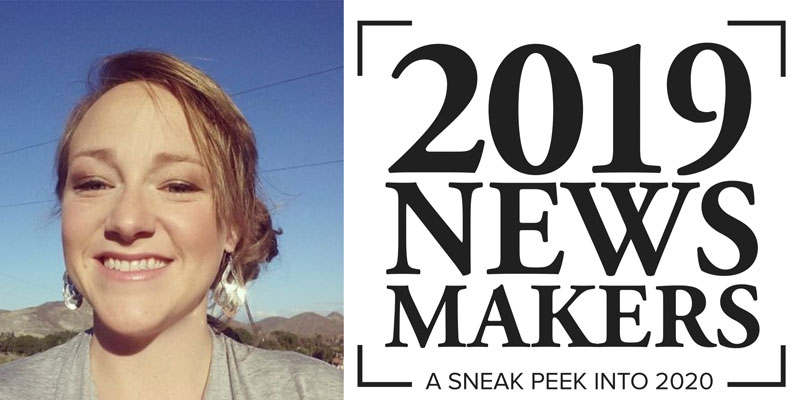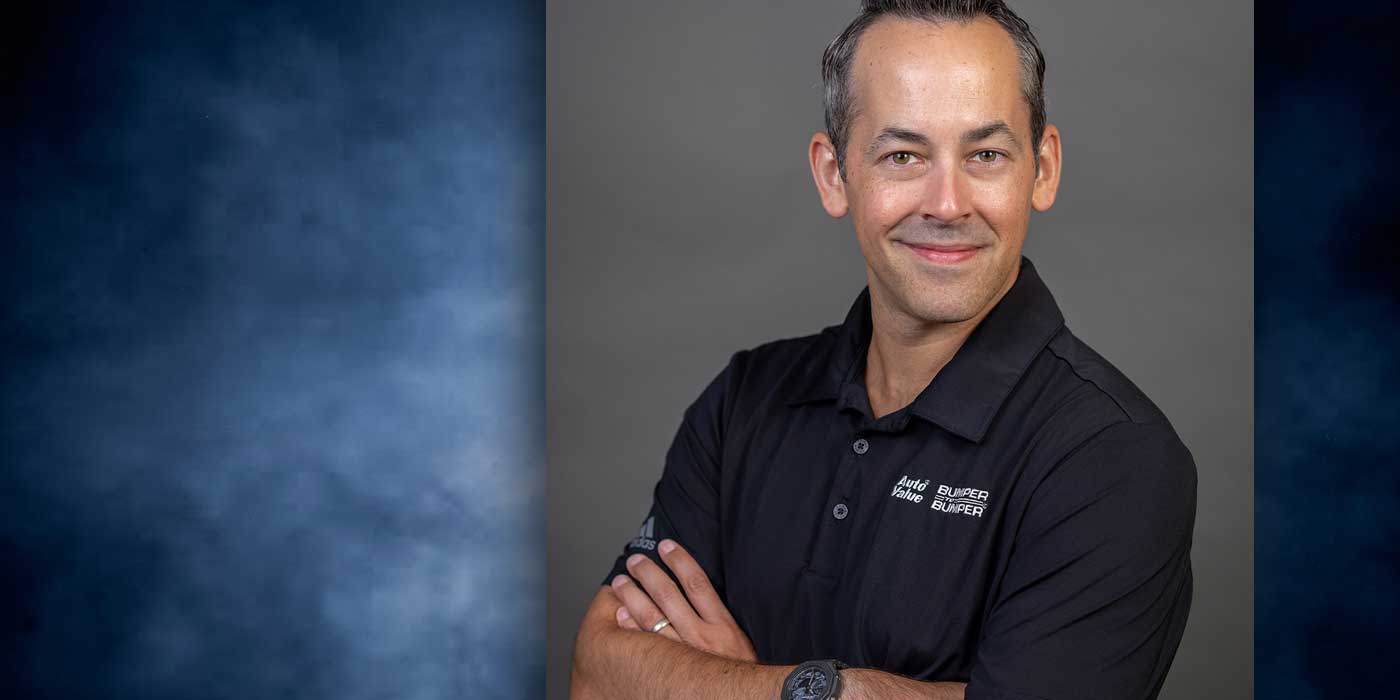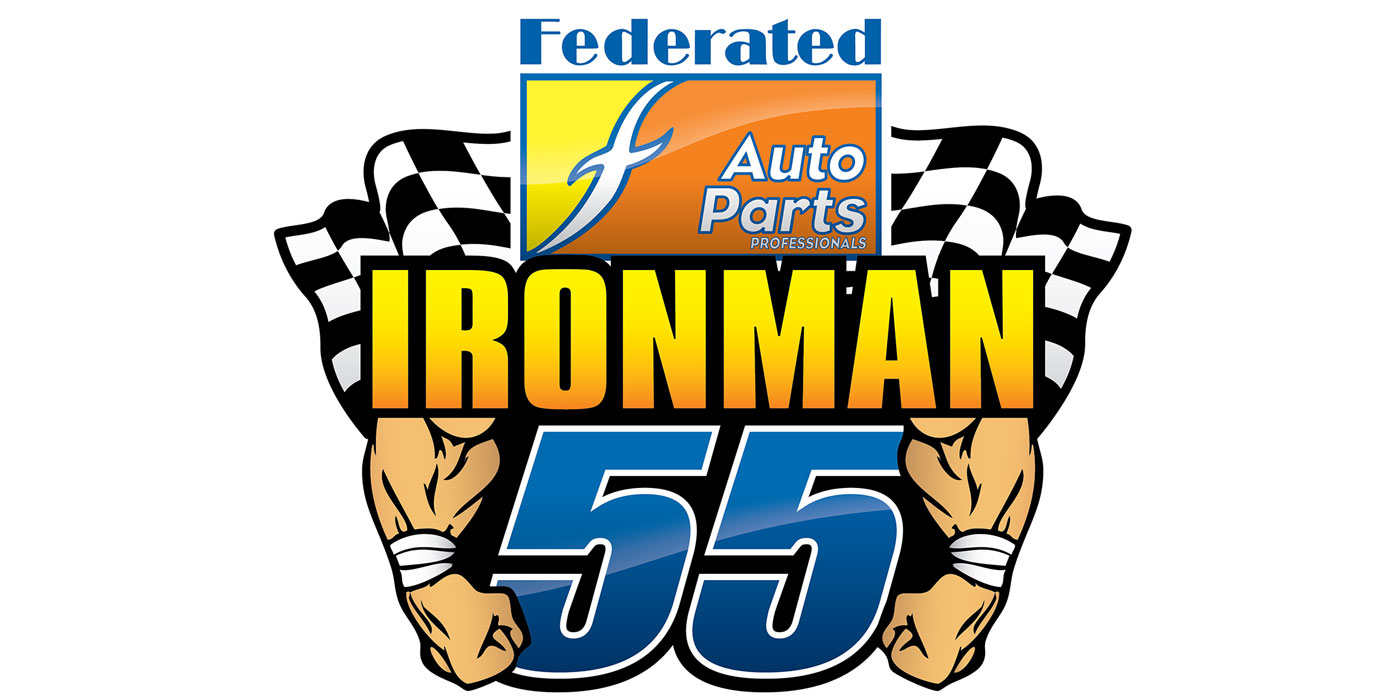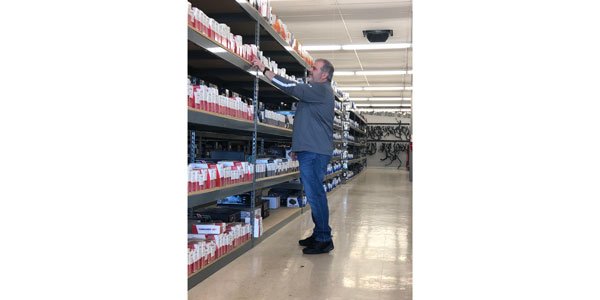
A Cadillac Escalade comes into your shop. It needs new ball joints, tie rods and even new brakes. So, you go online and search your POS to find the part you’re looking for. But did you really find what you needed?
“What is this Escalade?” asks Jim Davison, a zone manager at one of The Alliance’s Certified Service Centers under Eastern Warehouse Distributors, explaining how he encourages technicians to ask themselves that very same question. “When you look it up on the computer, it says Escalade, Escalade ESV, Escalade EXT. EXT means it’s an extended wheelbase, so it’s going to have a larger brake rotor than a standard short wheelbase ‘cause it’s a lot heavier. It changes your variants on rims, too, because the EXT may have a 22-in. wheel, where a plain Escalade may have a 17-in. wheelbase.”
With so many SKUs out there and sub models — especially for SUVs — on the road today, pausing to understand the vehicle in your bay and educate your staff about ordering the correct parts is becoming increasingly important to maintain your shop’s efficiency. Luckily, having a good relationship with your parts suppliers can help. We spoke with tire dealers, parts suppliers and Counterman magazine’s Counter Pro of the Year to better understand how tire dealers can foster their relationships with parts suppliers to increase their shop’s efficiency and, in turn, improve customer satisfaction.
Understanding What’s In Your Bay
In every shop, hiccups still occur. Even for a veteran tire dealer who has embraced online parts ordering, Joe Miles, owner of Kaiser Tire & Auto Service in Louisville, Kentucky, experiences your usual mishaps.
“One of the biggest [trouble spots] is not paying attention to if it’s all-wheel drive or two-wheel….You know the package on the vehicle itself. That tends to happen quite a bit,” says Miles, whose shop sources parts through Bumper to Bumper and other parts suppliers. “You know, we get a part in and compare it with the old one and say ‘Okay, well this isn’t at all what I took off,’ and the reason why is because we put the wrong vehicle in.”
Even when you ensure you’re ordering the right part, responsibility falls on both sides on the transaction. Some mishaps are on the parts distributor — they deliver a different part number than what was ordered. Others happen because a shop’s POS system calls a part one name, while the supplier or distributor calls it another, Miles explains.
“I always tell the new guys to try to get the VIN number because that’s your [the vehicle’s] birth certificate. They get the VIN number and that tells you everything about the car. Don’t take chances, you know?”
— Jim Davison, Eastern Warehouse Distributors
Davison, Counterman magazine’s Counter Pro of the Year, knows this issue all too well. With 20 years in auto parts distribution under his belt, he gets calls lacking information about a specific vehicle and urges technicians on the other end of the line to think about the vehicle they have in their bay.
“Your best bet is to take a step back and get as much information as you can before you call any parts house or any tire place and make sure that what you’re working on is what you’re saying it is,” he says. “Parts are getting super specific nowadays. When they’re [technicians] talking about suspension and brakes, for example…it’s all the sub-packages you have to be careful with. You really have to get in depth about what these people have.”
Larry Pavey, CEO of Automotive Parts Services Group (The Group – Federated Auto Parts & National Pronto Association), says many parts descriptions can be confusing and inconsistent terminology can also create challenges. Additional factors, such as TSBs, catalog errors or recalls can complicate the situation.
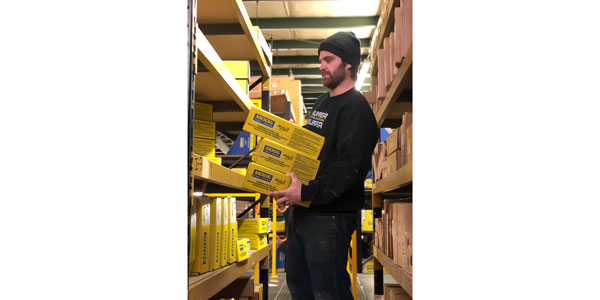
“Certain VIN codes or plate-to-VIN information are helpful, but there are many complexities in today’s vehicles to consider,” he says. “The make, model and year are the minimum requirements to determine the correct parts for the repair, but there could be many more factors depending on the type of part and use of vehicle.
“Working together as a team with strong communications is the best tool for getting the right part for each job, and while the right parts can be accessed through electronic ordering, there are many times when personal interface is highly beneficial.”
Jason Phillips, vice president of sales for The Alliance, says, communicating expectations between dealers and parts suppliers is highly beneficial so that each party can fulfill their duties.
“It’s a friction point when the way of doing things at one place may not be how they do it at another,” he says. “It’s imperative that everyone communicates what the expectations are and what’s reasonable.”
Managing Parts Inventory
Today’s shops are tighter on space and more applications are out there. For example, if you don’t specify if the vehicle in your bay has four-wheel or two-wheel drive, the brake rotors and calipers delivered to your shop may not be what you pulled off the vehicle. And, to ensure your parts inventory is moving at your shop, Miles suggests fostering a relationship with the sales reps from your parts suppliers and keeping monthly tabs on your inventory.
“We have our Bumper to Bumper sales rep coming in to see us weekly, and he’ll take care of my stock order,” says Miles, whose shop does a majority of fleet work. “There are certain things that we keep in stock at all times, you know – belts, oil filters, wheel weights – things like that. Every week when he comes, he has some type of different special or program going on. So we get that on a weekly basis.”
Miles says his shop performs monthly inventory checks to make sure he orders parts that move fast and ditches others that take up space. He utilizes The Alliance, O’Reilly’s, NAPA and local dealerships to fulfill his auto part needs.
One perk of The Alliance’s program is 30-minute delivery. Phillips says while he expects shops to stock “movers and shakers,” a 30-minute delivery period is a competitive advantage for those in densely populated areas or ones that are within a short distance of their parts suppliers’ warehouse.
“The key thing for us with 30-minute delivery is we enable them [shops] to stock less parts on the shelf because they know we can be there in a half hour or less in most of our markets,” he says.
The Group’s Pavey recommends dealers invest in a robust POS system to manage in-store inventory.
“Today, some shops are using barcode scanners to manage inventory and keep track of the parts used with each work order, and most shops are stocking the fastest moving items in order to save time, increase efficiency and enhance productivity,” he says. “A shop’s inventory management is greatly enhanced when working with their parts professional. By having the proper inventory on hand, a shop not only saves time, but has the ability to review products with customers, illustrate product differentiation and offer customer choice.”
Getting the Most Out of Parts Suppliers
Your relationship with your parts suppliers is more than an online order here or a weekly check-in there. Coupled with perks from tire manufacturers, tire dealers can take advantage of parts programs that extend beyond a warranty.
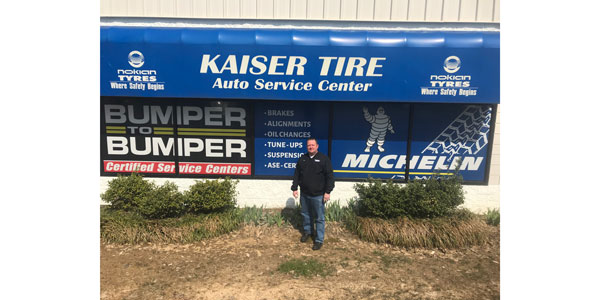
For five years, Kaiser Tire & Auto Service has been a member of the Alliance’s Certified Service Center (CSC) Program. His relationship with The Alliance allows him to utilize their nationwide warranty, cash in on rebates, offer financing options to customers and take advantage of training classes from parts manufacturers.
“Being in a parts program is very beneficial. For the independent tire guys, there’s a lot of benefits,” he says. “It brings a lot of credibility to our name, and with new stuff rolling out, to be able to have some hands-on training for my guys is fantastic.”
“Doing your stock order isn’t just filling out a sheet, you know. Make sure your sales rep is actually going over it with you or your service manager to make sure that the parts that are coming in is the stuff that you need.”
— Joe Miles, Owner of Kaiser Tire & Auto Service
The Alliance’s CSC program also offers a Roadside Assistance Package, extended warranty options (program members already have a 24-month, 24,000 mile warranty), uniform discounts, website creation and marketing materials, ASE certification reimbursement, tire protection plans and business insurance offerings, among other programs.
“We can take a shop and give them an online presence so consumers can find them on Google searches,” The Alliance’s Phillips explains, “and we have a reputation management service. So, if you get a bad Yelp review, how do you handle that? We’ve got a company that’ll do that for us.”
What sets Miles apart from others in the program is his involvement The Alliance’s Service Center Advisory Council, which shares industry trends and tests out services, is looking to add to their program for dealers.
“It’s kind of like a 20 group where you share best practices,” he says. “I’ve taken a lot away from just listening to other guys in the room about how they do certain things.”
Dan Ronda, co-owner of Ronda Auto Centers in Lowell and Grand Rapids, Michigan, has also benefited from the perks of working closely with a parts supplier. Like the Alliance’s CSC program, NAPA AutoCare Centers are entitled to a host of benefits including a nationwide warranty program, volume rebates, equipment programs, marketing services, consumer financing and rewards among other perks.
“Being a part of NAPA AutoCare, there are rebates available, and we can provide a piece-of-mind warranty, so that especially helps some of our customers who go to Florida in the winter,” he explains. “If they have issues in Florida, they can call me or go online and pull up a NAPA AutoCare dealer, and if there’s some part that’s failed, it’s covered 100% under the warranty. NAPA pays for everything right there to that dealer down there.”
As a NAPA AutoCare Gold member, Ronda says NAPA rebranded his stores, painting them NAPA blue and gold. The parts supplier also gave him a NAPA AutoNetTV for his waiting room, which scrolls through the shop’s menu board, ads and displays trivia questions while customers wait. Another perk Ronda has access to is training for his staff, which is often done in groups with other stores.
“A bunch of the repair facilities like us, we get together and talk — kind of like a business development group that NAPA has started for us….They bring in speakers. We did a Dale Carnegie course all together to just keep that knowledge going. It makes it affordable if you’re doing it together, especially with training,” he explains.“We’ll put classes together and they’ll [NAPA] bring in a trainer. They [technicians] can go to a regular college class-type setting and see the latest new testing procedures or what’s coming out, so they know about it before they see it [in the bay].”
The Group’s Pavey says shops that utilize Federated and Pronto programs are eligible for rebates, warranties and special pricing as well as training, roadside assistance and scholarships. Pronto’s program also includes rental discounts while both support ASE certification for shop employees. As always, Pavey says Pronto and Federated members can be a valuable resource with helpful suggestions that save time and enhance customer satisfaction, particularly on challenging jobs.
“Pronto and Federated parts professionals can assist in many valuable ways by providing information on subjects such as parts popularity, features, advantages, options, warranty and other factors that can assist shops in having the proper inventory on the shelf so they can maximize bay and technician efficiency,” he says. “We view each repair opportunity as a team effort and are proud to do our part to help achieve a positive outcome for all involved.”
While being a part of multiple parts programs does cost shops money, the rebates, training, networking and other services that are available pay back in the long run, Ronda says.
“If you’re into their program, they charge it to you,” he says, “but you know, you get that cost back. Ask them for help, ask them for training…. They’re always willing to provide that for you when you’re buying parts and supplies.”
The Right Parts at the Right Time
Keeping data on your customers and their vehicles can help in all aspects of your business – including having a better relationship with your parts suppliers and distributors.
Knowing what your most used parts are, stocking them on a regular basis and making sure you have a routine order helps, but Jim Davison, a zone manager with Eastern Warehouse Distributors in Vineland, New Jersey, encourages tire dealers to take a more in-depth approach.
“We have software now that can track this,” he says. “Let’s say, you know that Mr. Johnson brings in his 2017 [Ford] Escape, and you have a slew of other regular customers. If you have all their information such as the cars that they have, you can break it down and say, ‘Okay, these guys are our everyday customers that come in all the time. I want the filters for these cars in stock. The next time Mr. Johnson comes into your shop, he’s going to be happy that he comes to you and he doesn’t have to wait for his oil filter. He doesn’t want to be at your shop waiting for an old change. He wants to be out. So, have that filter on hand.”
Now that the car is in for an oil change, your shop can perform a full inspection and consult the customer’s profile to see if any other work needs to be done, as well as note when the customer needs to be called again to schedule additional, routine maintenance.
Data from parts suppliers is also helpful in determining what to stock. Dan Ronda, co-owner of Ronda Auto Centers in Michigan, has access to reports dialed down to the ZIP codes his two shops serve to determine what vehicles may come in and what parts to order. As a NAPA AutoCare Gold Center, he works with his NAPA sales reps to tweak his orders on a yearly, monthly and weekly basis to be sure what he’s stocking is projected for what’s out on the road.
“It kind of eliminates some of the guesswork,” Ronda says about the reports. “Once a year, we go through what we want to have with minimum and maximums on certain parts, and he’ll [his NAPA sales rep] come in and get those reports and see how we’re doing. You know, if we need oil filters, he’ll make sure we get what we need and that all of our supplies are up to date weekly, and we review any promotions or other specials that are going on that week.”
Check out the rest of the April digital edition of Tire Review here.








